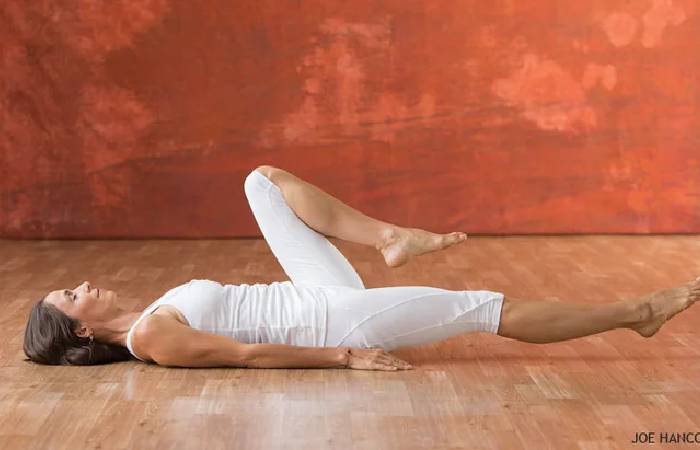Types of Yoga – In the past few years, yoga has become more popular. You may even have to listen or may have practiced some of the more modern and rare rehearsals of the ancient practice. Hip-hop yoga, HIIT yoga, and nude yoga, to name a few.
The practice of yoga is thousands of years old. However, it did not reach the USA until the end of the 19th century and only took firm root in the last few years. Meanwhile, yoga has gone from a practice associated with hippies to a method by nearly 37 million people.
And not all those millions of people go to a yoga workplace to do their yoga. If you like to roll out your mat at home (like at Beachbody Yoga Studio), you’re not alone: This is the number one place people work out.
Types of Yoga – What is Yoga?
“Plain and simple, yoga is the union of body, mind, and spirit. That’s the origin of yoga, and that’s how it’s practiced in the East,” says Miriam Amselem, a nearly thirty-year-old yogi. “It is a place of finding and connection with one’s body that includes balance, proper stretching techniques, breathing, meditation, centering the mind and spirit – this is yoga in its true form.”
However, you will find that each type of yoga has a somewhat different definition or interpretation. It is why we see goat yoga popping up alongside traditional methods like Iyengar and Ashtanga.
But most of all, yoga ignores the “no pain, no gain” philosophy in the fitness community. Yoga is not a place to push yourself, push your limits, or miss your body. Instead, the primary principle is ahimsa or non-harm, starting with choosing the right type of yoga for you.
Categories of Yoga: How to Choose the Right Kind for You?
After determining which of the diverse kinds of yoga suits best for you. Remember that there is no right or wrong, only one that may not be right for you.
“Like any exercise, pick something you want to do,” says Stephanie Saunders, executive fitness manager at Beachbody, besides a certified yoga teacher. “Bikram or Iyengar might make a plea to you if you’re very detailed. On the other hand, you might enjoy vinyasa or aerial yoga if you’re more of a free spirit. Find a course that excites you.”
So which one excites you? Our guide to common types of yoga can help you decide whether you’re in the mood for a refreshing, powerful, or something else.
Types of Yoga – Kundalini Yoga

Yogi Bhajan, a teacher and spiritual leader, brought this elegance of yoga to the West in the late 1960s. “Kundalini” translates to “life force energy” in Sanskrit (recognized as prana or chi in the yoga community), which remains believed to be tightly coiled at the base of the spine. These yoga sequences remain carefully designed to stimulate or unlock this energy. Also reduce stress and negative thinking. “You’ll raise your awareness and feel great,” says Veronica Parker, E-RYT 200 certified Kundalini Yoga teacher.
It remains achieved by challenging the mind and body through chanting, meditation, and kriyas (a specific series of postures associated with breath work and chanting). You may notice that they all wear white. It remains believed to ward off negativity and boost your aura. Parker says that a kundalini class typically begins with a mantra, ing exercises, a warm-up to get the body moving. Increasingly challenging poses, and a final relaxation and meditation session, Park
Types of Yoga – Vinyasa Yoga
Vinyasa yoga remains also called “flow yoga” or “vinyasa flow.” It’s a prevalent style. It remained adapted from the more controlled ashtanga practice of several decades ago. The word “vinyasa” translates as “to place in a special way,” which remains often interpreted as a combination of breath and movement. You’ll often see words such as slow, dynamic, or mindful associated with vinyasa or flow to indicate the intensity of the rehearsal.
“Vinyasa flow is an elegance of yoga where poses remain synchronized with the breath in a nonstop rhythmic flow,” says Sherrell Moore-Tucker, RYT 200. “Food can be meditative, calming the mind and nervous system even as you move.” Vinyasa yoga is suitable for those who have never tried it and also have been practicing it for years.
Hatha Yoga
Derived from the Sanskrit words for sun and moon, Hatha yoga remains designed to balance opposing forces. Therefore, balance in hatha yoga can come from strength and elasticity, physical and mental energy, or breath and body. “Hatha is an umbrella term for many diverse ‘styles’ and schools that utilize the body as a vehicle for self-inquiry,” says Jennifer Campbell-Overbeeke, E-RYT 500.
It is often used as a catch-all term for the bodily side of yoga. It is more traditional, or remains billed as yoga for beginners. “Hatha translates as ‘strong,’ but that has more to do with the concentration and regularity aspect of the practice than with applying unnecessary power to the body,” says Campbell-Overbeeke.
To be considered Hatha, classes necessarily include a combination of asanas (poses), pranayama (breathing exercises), and meditation, so other types of yoga—such as Iyengar, ashtanga, or Bikram—are technically considered hatha yoga.
Types of Yoga – Conclusion:
Types of Yoga – Most gyms offer the most common and also popular type of yoga. This yoga practice includes movement, breathwork, and meditation. Hence, with a focus on basic poses, most beginners prepare with Hatha yoga.




GIPHY App Key not set. Please check settings